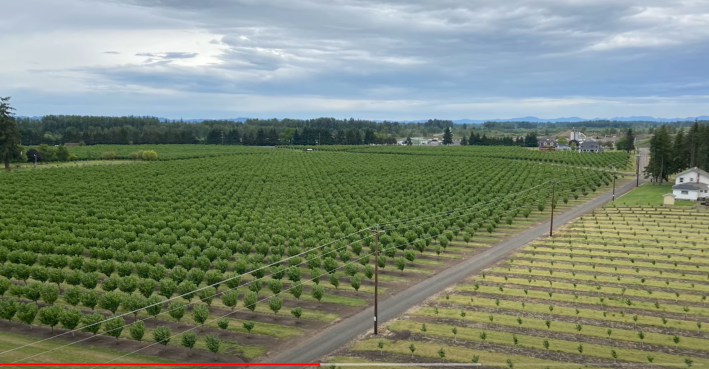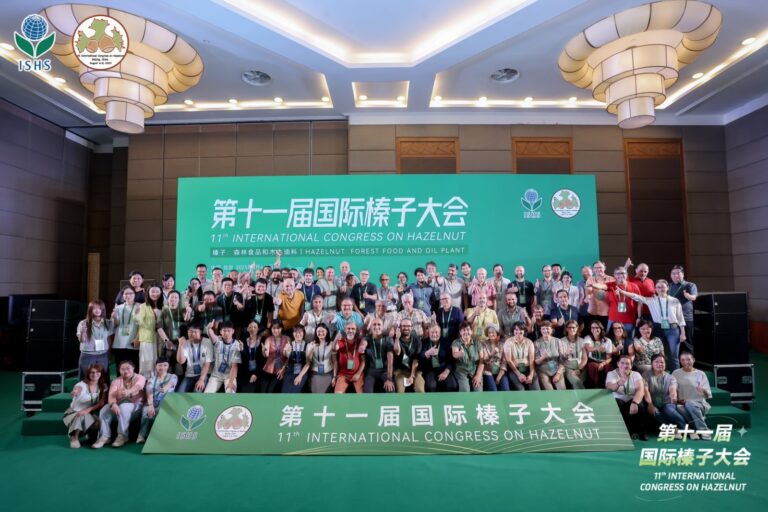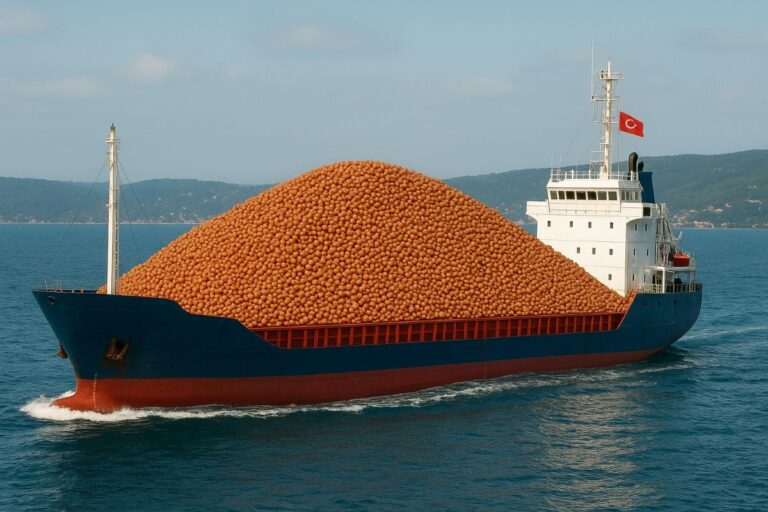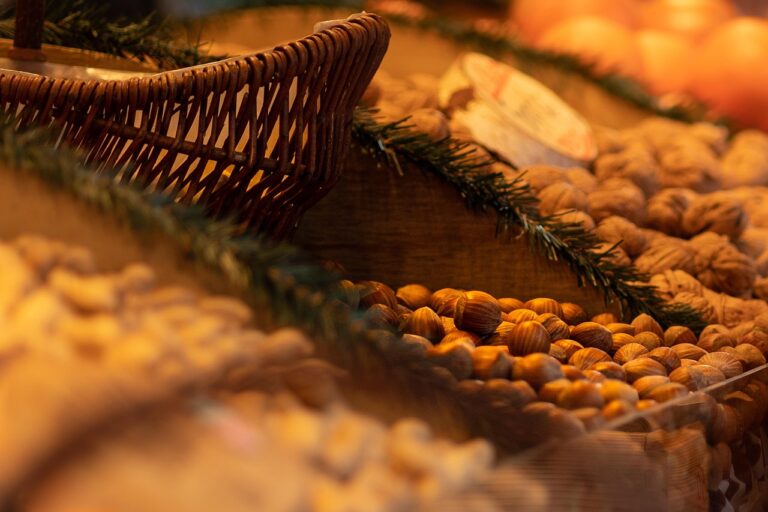Chapin family grows, dries hazelnuts

Bruce Chapin prepares for maintenance on his hazelnut cleaner. During harvest the cleaning and drying plant handles five tractor-trailer loads of nuts per day.

Bruce Chapin points out the small female flower atop each garland of male catkins. The pollen flies in late winter but actual fertilization doesn’t occur until early summer.

Bruce Chapin separates bundles of hazelnut trees at his Salem nursery. Chapin Farms grows the trees for their own orchards and those of others.
Bruce Chapin started farming when he got out of college in 1973. He’s the third generation on the Willamette Valley farm near Salem, Ore.
His father, Jack, planted a cherry orchard in 1960 and Bruce and Jack planted their first 12 acres of hazelnuts in 1969. In the ensuing years, more orchards were planted. Today he farms 100 acres of cherries and 500 acres of hazelnuts with his son Austin Chapin and his son-in-law Matt Schuster, who are co-owners of Chapin Orchards LLC and Chapin Dehydrating LLC.
Early on, Bruce also started a hazelnut nursery to reduce the cost of establishing new orchards. Through the years, the nursery has expanded beyond what is solely needed for his farm. The nursery’s mother trees produced so well this season that Chapin Orchards has a surplus of Jefferson hazelnut trees, a variety that has high resistance to eastern filbert blight.
Many of their first hazelnuts were the Barcelona variety. Later they planted a lot of the Ennis variety.
“Ennis was a very beautiful, large nut and went into a special market that resulted in premium prices,” Bruce Chapin said, “but when the eastern filbert blight moved into the valley we found it very hard to keep the Ennis orchards alive. The old Barcelona variety is also susceptible to the disease but not as bad as the Ennis,” Chapin said. “I’ve lost all my Ennis in the Salem area but I believe I can raise a Barcelona indefinitely with an intensive spray and pruning program.”
During 1993-94, seeing that the blight was coming from the north, Chapin planted hazelnuts in Dever-Conner, near Albany, 30 miles south of his home farm, giving him a six-year reprieve from when the disease hit the Salem area.
“I’ve got a very nice-looking Ennis orchard down there but every year the blight gets a little worse,” Chapin said. “The disease is here to stay; our best defense is to keep planting disease-resistant varieties, but replacing orchards is a very slow and expensive process.”
Hazelnuts start yielding a respectable crop after seven years, but full production isn’t reached until after 12 to 14 years.
“In the filbert industry, everything we do requires a long-term perspective and figuring out ways to make it better for the next generation,” Chapin said. “We are very thankful for the forward thinking at (Oregon State University) in starting a hazelnut breeding program. Without the resistant varieties recently developed our industry would be in a rapid decline rather than the growing, vibrant industry it is today.”
To further their involvement in the industry, the farm set up a cleaning and drying station in 1987 and installed a much larger one three years ago, going into business as Chapin Dehydrating. They now clean and dry nuts for more than 40 growers, who sell to Northwest Hazelnut and George Packing. During harvest, they clean and dry about five tractor-trailer loads a day.
Besides working with his son and son-in-law Bruce enjoys working with his church and has six grandkids growing up on the farm to pass his knowledge on to.
“Life doesn’t get much better than that,” he said.
Copyright: capitalpress.com






